Top 10 online payment statistics 2025

Airwallex Editorial Team

Online digital payments are integral to business success. As more consumers turn to online shopping and digital financial services, it’s essential for small UK businesses to understand the latest trends and statistics to remain competitive, secure, and ahead of the curve.
Below, the Airwallex business payment experts explore key global and UK-specific online payment statistics that can help small businesses understand past and future trends, from the growth of digital wallets to new and emerging consumer fraud behaviours.
Top 10 online payment statistics 2025 – summarised
Global online payments grow significantly: By 2028, digital payments will account for 79% of e-commerce payments – up from 34% in 2014 – and 53% of point-of-sale (POS) payments – up from just 3%. This growth presents an expanding opportunity for businesses to adopt digital payments.
Digital wallets drive growth: Digital wallets are set to drive the growth in digital payments, increasing from 22% in 2014 to 65% in eCommerce by 2030. Now’s the time to integrate digital wallets like PayPal, Apple Pay, and Google Pay into your business’ payment offerings if you haven’t already.
UK small business retail sales boom: While UK internet retail sales unsurprisingly rose 249.2% from £33.4 billion in 2013 to £116.8 billion in 2022, small businesses – those with less than 100 employees – saw an impressive 238.7% increase in sales over the same period, which showcases the growing role of eCommerce for UK businesses.
Debit card payments remain popular: Debit cards account for 48% of UK online transactions, followed by credit cards (26%) and PayPal (20%). Consider prioritising card and PayPal payments to cater to the majority of consumer preferences.
Mobile payments increasingly popular among younger adults: In 2023, younger adults in the UK were most likely to use mobile payments, with 78% of those aged 16–24 using a service. Be mindful of this growing trend and integrate mobile payment systems into your business so you don’t miss a sale.
Visa and Mastercard dominate: In 2023, Visa and Mastercard dominated online payments in the UK, accepted by 97% of stores. Ensure your business accepts these payment methods to stay competitive.
Small businesses compete with bigger businesses: Small businesses maintained a 22.6% share of total UK online sales in 2022. While large businesses hold the majority, small businesses can continue to grow their share by implementing effective payment solutions.
Non-cash transactions grow: Global non-cash transaction volume is projected to rise significantly, from 1,650.5 billion in 2024 to 2,838.2 billion in 2028, indicating a continuing shift away from cash payments. Ensure your business remains agile and adapt to these changes by offering digital payment methods.
Buy Now, Pay Later (BNPL) is on the up: BNPL services like Klarna and PayPal's “pay in 3” make up 2% of UK online transactions. Businesses, especially in sectors like fashion and retail, should explore incorporating BNPL options into their payment strategies.
UK payment fraud trends: Remote purchase fraud – where someone uses stolen or illegally obtained card details to make purchases – fell by 9% from £395.7 million in 2022 to £360.5 million in 2023. But as new consumer fraud trends emerge, it’s important to remain vigilant and incorporate secure payment methods to prevent fraud from happening and maintain customer trust.
Growth in digital financial service users
The number of global digital financial service users is set to steadily increase from 2024 to 2028. Digital commerce users are expected to rise from 3.55 billion to 4.79 billion, reflecting a broader adoption of online transactions. Mobile POS payment users will also grow from 1.68 billion to 2.01 billion, showcasing a greater reliance on mobile payment solutions. And digital remittance users are expected to increase from 15.82 million to 18.85 million, indicating steady growth in digital cross-border transfers.
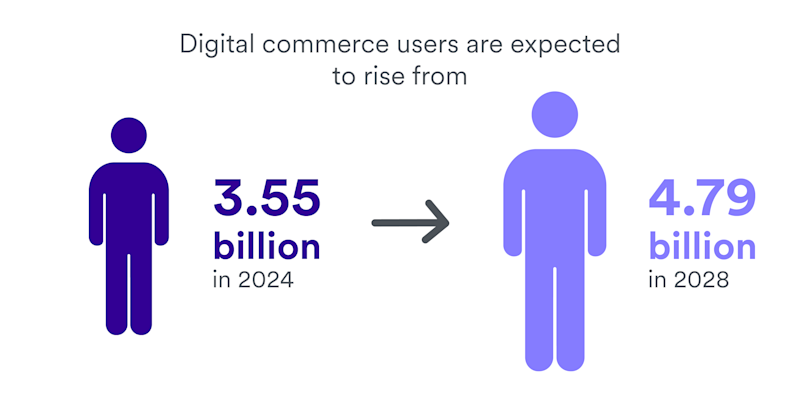
Global payment methods and trends
The shift from traditional to digital payments
Traditional payment methods are on the decline as digital payments grow in eCommerce and point-of-sale (POS) transactions. By 2030, digital payments will account for 79% of eCommerce payments, up from 34% in 2014, and POS digital payments will rise to 53%, up from just 3%.
Digital wallets are a major driver of this shift, increasing from 22% to 65% in eCommerce and from 3% to 45% in POS transactions.
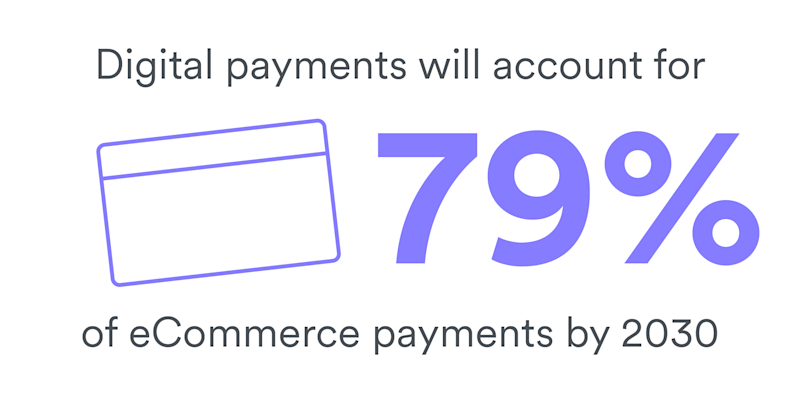
B2C digital wallet stats: Global and UK
In 2023, 3.7 billion people worldwide used digital wallets, making up 46% of the global population. This figure is projected to grow to 5.4 billion by 2028, reaching 60% of the global population. Apple Pay is the most widely used provider, with 66% of users, followed by Google Pay at 35% and PayPal at 30%. Other notable providers include Revolut (12%), Cash App (11%), Mastercard Click to Pay (9%), Samsung Pay (8%) and Bitpay (5%).
Card transactions made via a digital wallet grew significantly in the UK, increasing from 1 billion in 2019 to 9 billion in 2023. As a result, the percentage of total transactions made by card via digital wallet also rose, from 8% in 2019 to 29% in 2023.
Expanding market size and regional growth rates
Global eCommerce sales are projected to grow from $6.8 trillion in 2024 to $10.8 trillion by 2030, with an 8% compound annual growth rate (CAGR) – CAGR is the average annual growth rate over a specified period.
The U.S. and China, the largest eCommerce markets at $2.1 trillion each in 2024, are expected to grow at 6% and 7% CAGR, respectively.
Emerging markets are leading the way though, with India (17%), the Philippines (15%), Nigeria (12%) and Peru (12%) experiencing the highest growth rates. Colombia (13%), Vietnam (10%) and Saudi Arabia (9%) also show strong upward trends.
In contrast, European markets, including the UK, Germany and France, are expected to grow at a slower rate of 4% to 5% CAGR, reflecting a more mature market. Overall, Latin America, Southeast Asia and the Middle East are emerging as key growth regions in global e-commerce expansion.

Shifts in UK payment preferences
The UK has seen a steady shift from traditional payment methods to digital-first solutions. Contactless card payments have surged from 53% in 2017 to 91% in 2022–23, making them one of the most widely used payment methods. Mobile card payments have also grown significantly, rising from 14% in 2017 to 39% in 2022–23.
At the same time, manual payment methods continue to decline. Cheque usage has dropped from 21% in 2017 to just 7% in 2022–23, while Chip and PIN payments have fallen from 86% to 78% in the same period. Cash usage, though still common, has decreased from 88% in 2020 to 84% in 2022–23.
Interestingly, while digital solutions like PayPal have remained a key part of the UK’s payment landscape, their usage has slightly declined from 62% in 2017 to 59% in 2022–23. Meanwhile, online and phone card payments have remained stable at around 73% since 2020.
These trends reflect the UK's rapid adoption of faster, more convenient electronic payment processing, with contactless and mobile payments leading the way.
The rise of mobile payments in the UK
The adoption of mobile payments has grown significantly in recent years, particularly among younger consumers. In 2023:
78% of 16–24-year-olds and 67% of 25–34-year-olds were registered for at least one mobile payment service
Adoption declined with age: 48% of 35–44-year-olds, 35% of 45–54-year-olds, 24% of 55–64-year-olds, and just 14% of those 65+ were registered
Overall, the share of UK adults using mobile card payments jumped from 30% in 2022 to 42% in 2023
This reflects a generational shift, with younger consumers embracing mobile wallets, while older demographics remain more reliant on traditional payment methods.
eCommerce payment preferences by country
eCommerce payment statistics show that preferences vary widely across the globe. Digital wallets dominate in China (84%) and India (64%), while account-to-account (A2A) payments are most common in the Netherlands (67%) and Poland (70%).
Buy Now, Pay Later (BNPL) has significant traction in Sweden (23%) and Germany (20%), while credit cards are widely used in Japan (55%), South Korea (51%), and Canada (46%). Debit and prepaid cards remain popular in Belgium (29%) and the UK (23%), whereas cash sees its highest usage in the Philippines (19%), Indonesia (11%) and Nigeria (11%).
However, the number of available payment options also varies by country. Japan leads eCommerce businesses with an average of 9.5 payment options, followed by Brazil (7.9), India (7.5) and the USA (6.9). In Europe, Italy, Germany, Greece, Switzerland and Australia each offer around 6.6 options, while the UK provides 5.6. Interestingly, China - despite its dominance in digital wallets - offers the fewest choices, with just 4.1 payment options on average.
Payment preferences by demographic
Digital adoption across age groups
Younger consumers are adopting digital payment methods at higher rates, while older demographics tend to rely on traditional options. Debit cards are the most widely used method, with 53% of respondents reporting usage, peaking among those aged 28–59. Bank transfers follow at 39%, with the highest adoption among those aged 28–43. Credit cards (33%) maintain steady usage across all age groups but are most common among those 44 and older.
Digital wallets and emerging payment methods skew younger
Digital wallets are more popular with younger users with 34% of those aged 18–27 using them, but adoption drops with age, reaching just 12% among those 79 and older.
BNPL and cryptocurrency also see higher use among younger consumers with 16% and 9% of 28–43-year-olds using these payment methods respectively, though adoption declines sharply in older groups.
Men (9%) are more likely than women (3%) to use cryptocurrency, but overall, gender differences in payment preferences are small. Notably, 8% of respondents do not use any digital payment systems, with non-adoption highest among those 79 and older (26%).
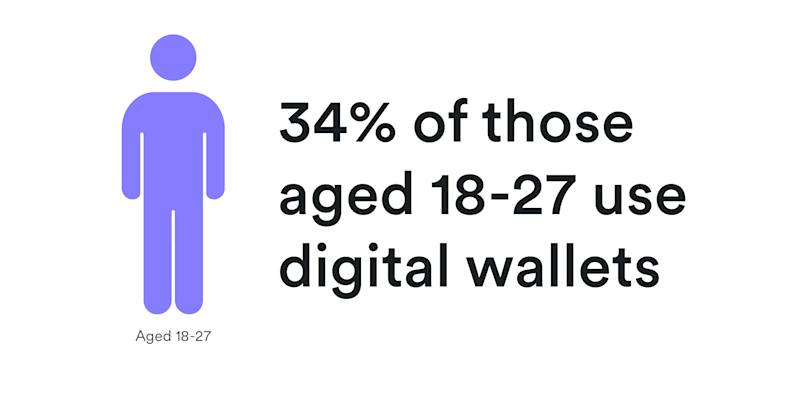
Growth of the global payment gateway market
The global payment gateway market has seen rapid expansion, growing from $10.4 billion in 2017 to $32.5 billion in 2023, with a projected increase to $132.2 billion by 2030. The Retail & E-commerce sector leads this growth, expanding from $2.6 billion in 2017 to a forecasted $36.8 billion by 2030. The Banking, Financial Services, and Insurance (BFSI) sector follows, rising from $2.5 billion in 2017 to $33.2 billion by 2030.

What drives UK payment choices?
As payment habits evolve, UK consumers continue to prioritise familiarity, with 50% preferring methods they already use. Other key factors include:
Speed (44%) – Faster transactions remain a priority, driving the growth of contactless and mobile payments
Purchase protection (43%) – Consumers value safeguards against fraud and disputes, reinforcing the popularity of credit cards and PayPal
Security (40%) – Secure authentication methods, like biometrics and encryption, influence payment choices
Spending tracking (32%) – Budget-conscious consumers favour digital wallets and banking apps that offer better financial oversight
Wide acceptance (31%) – Practicality plays a role, ensuring payments work across various retailers and platforms
Rewards (23%) & Privacy (22%) – While less critical, some consumers value cashback, loyalty perks or enhanced privacy
Spreading costs (13%) – Despite the rise of Buy Now, Pay Later (BNPL), fewer prioritise instalment options when selecting payment methods
This sheds light on why contactless cards and digital wallets have surged, while traditional methods like cheques and Chip & PIN continue to decline.
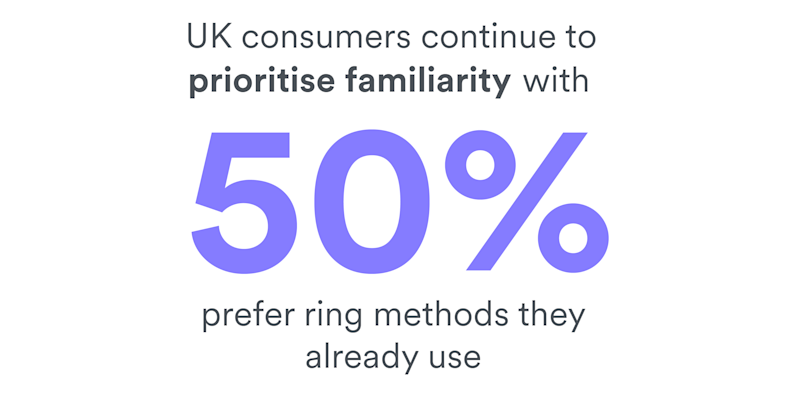
Financial transaction values and growth
Annual transaction value per user
On average, digital remittances - the electronic transfer of money sent by individuals - have the highest global annual transaction value per user across digital financial services from 2025 to 2028, increasing slightly from $9.5k in 2025 to $9.67k in 2028.
Mobile POS payments experience the fastest growth, rising from $2.45k to $3.03k. In contrast, digital commerce shows a slight decline, from $2.24k to $2.16k, suggesting shifting spending patterns or lower transaction values per user over time.
Global growth in non-cash transactions
Global non-cash transaction volumes have grown significantly, from 157 billion in 2006/07 to a forecasted 1,650.5 billion in 2024. This volume is expected to rise even further to 2,838.2 billion by 2028, indicating a strong upward trend in non-cash transactions.
Regional growth patterns
Asia-Pacific (APAC) leads in volume, with 528.7 billion transactions in 2022, expected to grow to 1,457.6 billion by 2028. Europe and North America follow with steady increases, while Latin America exhibits the highest growth rate of 23.2% from 2023 to 2024. Non-cash transactions globally are projected to grow at a 15% CAGR from 2023 to 2028, with APAC experiencing the highest regional growth at 17.7%.
Payment authentication and friction levels
Regional variations in payment authentication success rates
There are notable differences in 3D Secure (3DS) success rates, challenge success rates and frictionless payment rates across regions and card schemes. Europe boasts the highest 3DS success rate at 82%, while North America is lower at 61%, with the USA particularly low at 41%.
Frictionless payment rates
Austria (76%), Greece (76%) and Lithuania (84%) have the highest frictionless payment rates, while Denmark (40%) and India (43%) see lower rates. Among card schemes, UnionPay has the highest 3DS success rate (99%) and frictionless payments (70%), while Diners & Discover achieves a 99% frictionless payment rate.
Digital payments in the UK
UK online retail trends
UK internet retail sales grew from £33.4 billion in 2013 to £116.8 billion in 2022, a 249.2% increase. Sales from small businesses (fewer than 100 employees) rose by 238.7% - from £7.8 billion to £26.4 billion over the same period. Small businesses' share of total online sales peaked at 26.1% in 2021 before declining to 22.6% in 2022.

Share of UK online sales
The share of internet sales in total UK retail sales increased from 12.5% in 2015 to 27.2% in 2024. Growth was steady until 2019 at 19.2%, but a sharp rise occurred in 2020 and 2021, likely driven by the pandemic. After peaking, the percentage dropped to 26.6% in 2022, but stabilised at 27.2% in 2024, indicating sustained growth despite post-pandemic adjustments.
UK shoppers who do and don't buy online
In 2024, 12.67% of men and 9.99% of women had not made any online purchases, with the percentage varying slightly by age and region. The 25–34 age group had the lowest non-buying rate at 8.39%, while the 45–54 and 55+ age groups had higher rates at 12.50% and 11.86%, respectively.
Regionally, Greater London (7%) and Northern Ireland (6.78%) had the lowest non-purchase rates, while the South East (14.86%) and North East (14.81%) had the highest.
The majority of respondents across all groups, though, had made at least one online purchase.
Payment methods in the UK and Europe
Online payment methods in the UK & EU
In the UK, debit cards are the most common payment method for online transactions, comprising 48% of purchases. Credit cards follow at 26%, with PayPal accounting for 20%. Buy Now Pay Later (BNPL) services make up 2%, and 4% of respondents reported not making any online purchases in the past three months.
The UK leads the share of retail eCommerce sales among selected European countries, reaching 28.9% in 2021 before declining to 26.5% in 2022. Germany and the Netherlands saw steady growth, while Italy’s share grew from 2.1% in 2014 to 10.2% in 2022. Other countries experienced varying increases, with the pandemic again driving a sharp uptick in 2020 and 2021.
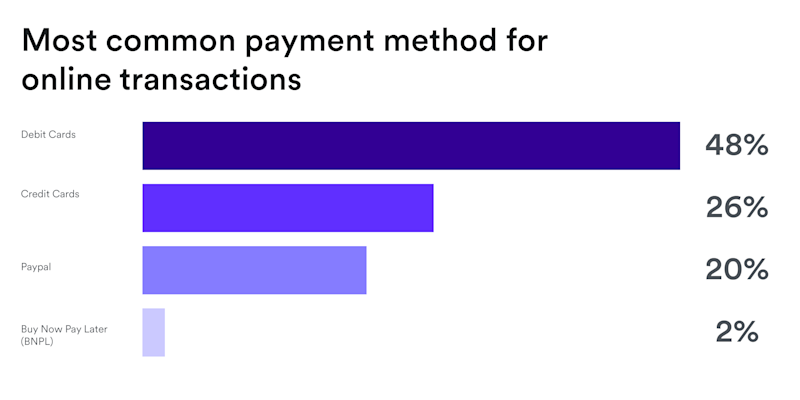
Top payment instalment providers
In 2023, Klarna was the most commonly offered payment instalment provider, particularly in categories like furniture & homeware (10%), fashion (7%) and electronics (7%). Afterpay followed closely, with the highest adoption in fashion (7%) and care products (6%).
Future of UK payment methods
The shift towards digital payments in the UK is expected to accelerate over the next decade:
Cash transactions are projected to decline from 5.98 billion in 2023 to 3.41 billion by 2033, continuing their downward trend
Faster Payments and other remote banking transactions will grow from 4.90 billion to 7.15 billion, reflecting increased adoption of instant payments
Debit cards will remain the most used payment method, rising from 24.53 billion to 31.11 billion, with contactless transactions making up a larger share
Credit card transactions will grow from 4.56 billion to 5.73 billion, while cheque usage will further decline from 110 million to just 56 million
Other payment methods, including direct debits and standing orders, will see modest growth
As the digital payment statistics show – options always expand. The data shows the UK will likely continue moving away from traditional payment methods, reinforcing the long-term decline of cash and cheques.
UK consumer satisfaction with payment choices
In the UK, consumer satisfaction with payment choices is high, with 90% of respondents satisfied overall, both for online and in-store purchases. Specifically, 46% are very satisfied with payment choices for general purchases, and 44% are satisfied.
For online purchases, satisfaction is slightly higher, with 48% very satisfied and 41% satisfied. For in-store purchases, 47% are very satisfied, and 43% are satisfied.
Dissatisfaction is minimal, with fewer than 2% expressing any dissatisfaction or uncertainty.
Fraud trends
Online payment fraud trends
Merchant losses from online payment fraud are expected to increase from $38 billion in 2023 to $91 billion in 2028. Total losses over this five-year period are projected to reach $362 billion.
Fraud committed by consumers
A survey shows that 40% of shoppers in the UK, France, and Germany have committed fraud, while 36% have considered it. Common fraud behaviours include consumers who:
Buy something online with the intention of returning it after use (4% have done this in the past year)
Claim a refund for delayed items, then keep the products when they arrive (7%)
Create multiple accounts to repeatedly exploit new customer offers, vouchers etc (8%)
Falsely claim online purchases never arrived, were damaged, or were faulty, then receive a refund (3%)
Return an empty box or a box with a fake item instead of the original product (3%)
Use someone else’s payment card details without permission to make online purchases (2%)
Buy more than needed to qualify for offers like free shipping or returns, intending to return unwanted items (10%)
Use a discount or voucher more than once or beyond its specified terms (10%)
Purchase suspiciously discounted goods on online marketplaces, e.g., Facebook or eBay (12%)
It pays for small businesses to watch for these fraudulent methods as they can lead to financial losses, damage to reputation, and unwanted operational costs.
Digital exclusion and payment adoption
Digital exclusion in the UK
The percentage of UK adults with poor or non-existent digital skills fell from 14% in 2017 to 7% in 2022. Older age groups saw the largest gains, with a drop in low digital skills from 27% to 14% for those aged 65–74, and from 59% to 35% for those 75 and older.
Top UK eCommerce retail sectors
In 2024, the food sector topped UK eCommerce, generating the highest sales at £19.45 billion, followed by fashion, clothing, and textiles with £16.52 billion. Household goods reached £9.09 billion, while DIY, furniture, and home furnishings generated £6.69 billion. Sales from sports equipment, games, and toys are estimated at £5.18 billion and beauty and cosmetics contributed £2.25 billion.
Top online stores in the UK
In 2024, Amazon.co.uk leads the UK online retail market, with eCommerce net sales of $16.11 billion. Tesco.com follows with $7.22 billion, and Sainsburys.co.uk ranks third with $6.64 billion. Other top retailers include Asda.com ($5.34 billion), Argos.co.uk ($3.06 billion) and Ocado.com ($2.93 billion). Next.co.uk, Currys.co.uk, JohnLewis.com, and Apple.com complete the top 10, with sales ranging from $2.40 billion to $2.29 billion.
Top online grocery stores in the UK
In 2024, Tesco.com leads the UK food and beverage eCommerce market with $4.59 billion in revenue, followed by Sainsburys.co.uk at $3.85 billion. Ocado.com ranks third with $1.76 billion and Asda.com generates $1.39 billion. Other key players include Morrisons.com ($1.11 billion), Waitrose.com ($976.89 million), and Amazon.co.uk ($418.94 million). Coop.co.uk, Majestic.co.uk, and Nakedwines.com complete the list, with revenues ranging from $229.62 million to $152.21 million.
UK online purchases by category
Clothing was the most purchased product online in the UK, with 50.25% of respondents reporting a purchase. Younger consumers (16–24) bought fewer clothing items compared to older groups (45–54). Food, electronics, and shoes were also popular, with varying preferences across different demographics.

Airwallex Editorial Team
Airwallex’s Editorial Team is a global collective of business finance and fintech writers based in Australia, Asia, North America, and Europe. With deep expertise spanning finance, technology, payments, startups, and SMEs, the team collaborates closely with experts, including the Airwallex Product team and industry leaders to produce this content.
Posted in:
Online paymentsShare
- Top 10 online payment statistics 2025 – summarised
- Growth in digital financial service users
- Global payment methods and trends
- Shifts in UK payment preferences
- Payment preferences by demographic
- Financial transaction values and growth
- Payment authentication and friction levels
- Digital payments in the UK
- Payment methods in the UK and Europe
- Fraud trends
- Digital exclusion and payment adoption
- Top UK eCommerce retail sectors


